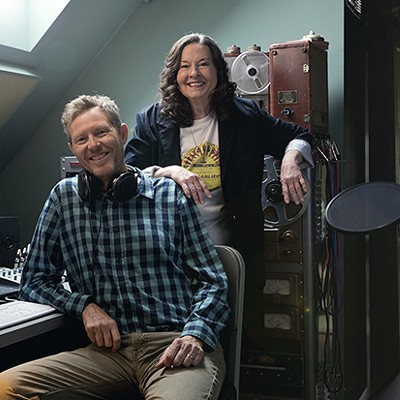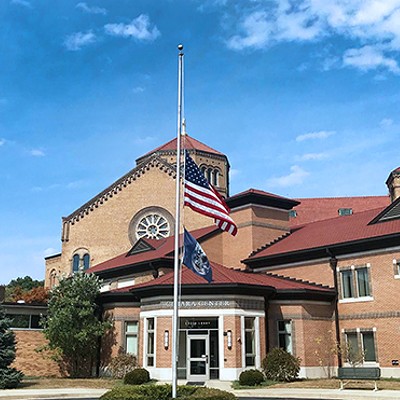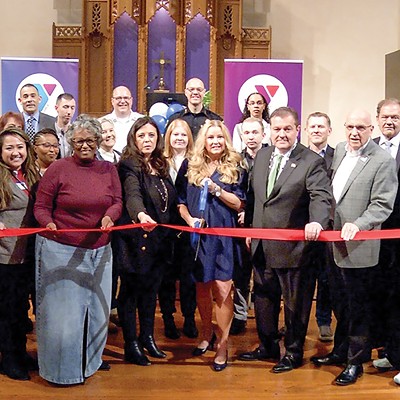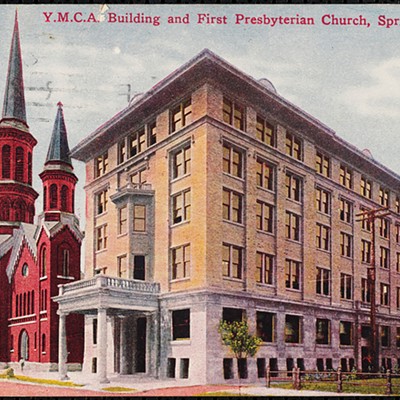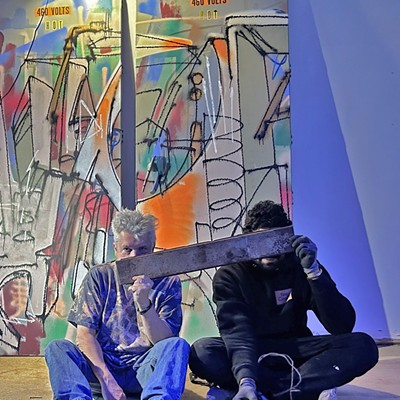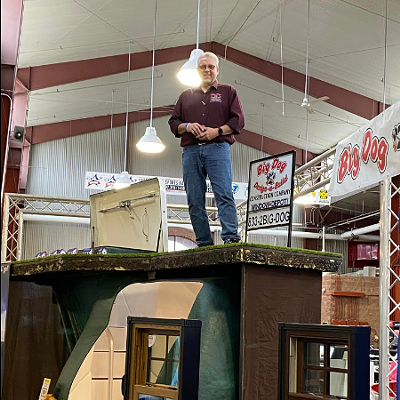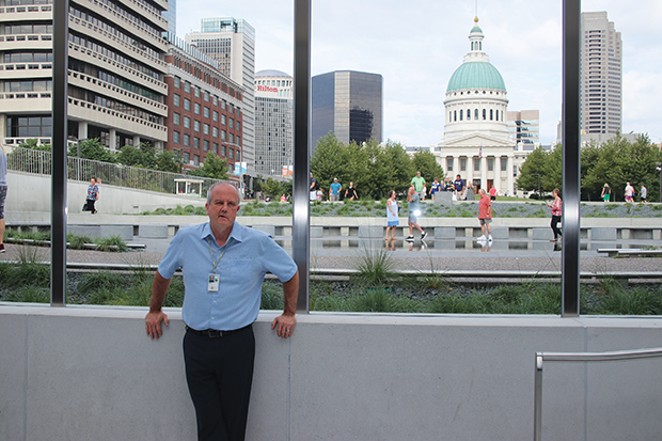
Mike Ward, superintendent of Gateway Arch National Park, says being involved in the redevelopment of the Gateway Arch is a once-in-a-lifetime career opportunity. Eight years in the making, the CityArchRiver project is a $380 million public-private partnership that has transformed the Arch grounds and surrounding areas in downtown St. Louis. Hallmarks of this huge undertaking include a spectacular new visitor center and museum, expanded trails and outdoor areas with more than 4,000 trees, an inviting North Gateway connection to Laclede’s Landing, a more accessible riverfront and a revitalized 91-acre urban national park with pedestrian-friendly access between downtown, the Arch and the Mississippi River. It is definitely worth a visit.
This is the largest pubic-private partnership in the history of the National Park Service. It is also the first time a local population approved a tax for a national park renovation. Accessibility and sustainability are key elements of the multifaceted project.
The highway that separated downtown from the Arch is no longer an obstacle to visitors. A grassy, tree-lined plaza – Luther Ely Smith Square – connects the historic Old Courthouse downtown with the new entrance to the Arch. Visitors are unaware they are crossing over the busy I-44 highway. An impressive new museum beneath the Arch presents engaging and educational exhibits covering 201 years of history and the central role of St. Louis as the Gateway to the West. Exhibits feature high-impact visuals and interactive elements that entice visitors to want to learn more. Over one million people visit the Arch annually. The new state-of-the art visitor center serves visitors more effectively and efficiently than the old one did.
The CityArchRiver Partnership
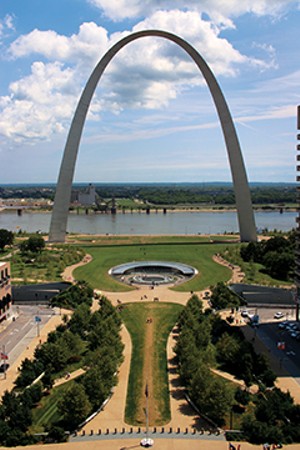
The $380 million investment came from multiple sources. Citizens of St. Louis and St. Louis County passed Proposition P in April 2013, creating a 3/16th-cent sales tax that will generate $90 million and help fund ongoing operations and maintenance. Private donations from individuals, corporations and foundations totaled $221 million. The lead benefactor was Enterprise Holdings, Inc. and Family. Government agencies, including the U.S. Department of Transportation, U.S. Department of the Interior, City of St. Louis, National Park Service, Bi-State Development Agency and Great Rivers Greenway, provided $69 million.
Ward, superintendent of the national park, says this partnership has forged a new way of thinking about public-private partnerships within the National Park Service. In the past, private support meant donations would go to the national park to manage. In contrast, this project involved a true partnership and shared decision-making. He describes St. Louis as a philanthropic community. Cam Sholly, Midwest regional director for the National Park Service, says, “We’re grateful for the generosity of the citizens of St. Louis and our corporate and philanthropic partners. If it hadn’t been for them, this project wouldn’t have happened.”
Gateway Arch National Park
The Jefferson National Expansion Memorial was established as a unit of the National Park Service in 1935 to commemorate Thomas Jefferson’s vision of the continental expansion of the United States. St. Louis’ Old Courthouse, the site where the famous Dred Scott case began, was also part of the Jefferson National Expansion Memorial. Two years after World War II, the Jefferson National Expansion Memorial Association sponsored an architectural competition for a monument along the banks of the Mississippi River. Eero Saarinen’s Gateway Arch was selected from among 172 entries. Construction didn’t begin until the 1960s, and the Arch was completed in 1965. The Museum of Westward Expansion was added underneath the Arch in 1976. It was replaced by the new museum.
There are more than 400 sites and many types of classifications within the National Park Service, but only a small percentage are national parks. A bipartisan bill passed by Congress and signed into law in February this year renamed the Jefferson National Expansion Memorial the Gateway Arch National Park, making it the 60th national park. The Gateway Arch is widely recognized as the symbol of St. Louis and the “Gateway to the West.” The new name reflects that public recognition.
Springfield native at the center
Mike Ward started his long career with the National Park Service as a Youth Conservation Corps worker at Lincoln Home National Historic Site in Springfield the summer after graduating from Griffin High School in 1983. Thirty-five years later he is superintendent of Gateway Arch National Park. He was at the Lincoln Home for eight years, with increasing responsibilities for many aspects of park maintenance. In 1991 he became the first maintenance worker at the newly created Ulysses S. Grant National Historic Site outside St. Louis. Over the next 16 years he served in many different roles and ultimately became site manager. From 2008 to 2015 he was superintendent of Voyagers National Park in International Falls, Minnesota.
Protecting natural and cultural resources is certainly a responsibility of park managers, but working with the community is also a fundamental part of the job. This is not easy, as there are often competing interests and diverse community perspectives on what can and should be done in a national park. In Minnesota, Ward was active in the community and created an atmosphere in which the national park worked collaboratively with the community. Sholly, the Midwest regional director, oversees 61 units in 13 states. He says, “Mike did a tremendous job building trust with community members and finding balance in that relationship.”
In December 2015, Ward was hired as acting superintendent of Jefferson National Expansion Memorial and then was made permanent superintendent in April 2016. When he was hired, construction was underway but the partners were not all working together effectively. Ward leant a calming voice and brought National Park Service resources forward to assist in areas that were stalled. Sholly says, “Mike has the leadership acumen conducive to listening to partners. He understood the vision and potential of a project of this magnitude and the example it sets nationally.” Sholly describes Ward as “an exemplary leader, great listener and communicator and a very effective problem-solver. Mike is very likeable, and people trust him. He is one of the best superintendents I’ve worked with.” When asked about his success as a superintendent, Ward has a simple answer, “My parents taught me how to be polite. When you do the right things, it seems to work out.”
Ward says he has been blessed with incredible staff at every park where he has worked. He attributes the dedicated staff to a Midwest culture and commitment to the mission of the National Park Service.
New visitor center and museum
The new visitor center and museum at the Gateway Arch is a $176.4 million investment that includes 46,000 square feet of new space. The entrance faces west and features a sleek, curved stainless steel and glass entrance designed to blend wonderfully with the Arch. Upon entering the visitor center, guests are treated to a magnificent view of the Old Courthouse. The new visitor center provides a more user-friendly guest experience than before. Previously, visitors waited outside to enter at the legs of the Arch. Now they purchase tickets to the top of the Arch inside and have access to restrooms and other visitor amenities as well as the new museum.
The mezzanine between the lobby of the visitor center and exhibit galleries features a large terrazzo floor with a map of North America showing the Lewis and Clark expedition and other historic trails of westward expansion. This large open space doubles as a unique venue for special events. Leading from the visitor center to the exhibit galleries are large immersive video screens depicting wagon trails, trading posts, bison, trains and other images of the west.
The stories of Thomas Jefferson and his vision of westward expansion are woven throughout the new museum. Both positive and negative impacts of westward expansion are revealed, and exhibits incorporate the diverse perspectives of Native Americans, Mexicans and other individuals. These stories are told in engaging, accessible and informative ways through high-impact murals and visuals, large-scale videos, interactive exhibits, personal stories, life-sized displays and original and reproduction artifacts. Many of the exhibits with large objects also feature smaller scale tactile models as part of the museum’s commitment to universal design. Universal design goes beyond ADA accessibility and seeks to create the same positive experience for all people at the same time.
Many of the artifacts on display were previously in storage while others are newly discovered. Stones from the original Old Rock House, an 1818 fur trade warehouse, had been in storage and were used to reconstruct this building. Another exhibit includes dishes and other objects from a hotel that stood prior to the Great Fire of 1849. They were found in a buried cistern while excavating the grounds for the project in 2015. The objects provide insights to hotel life during the time of westward migration.
The six themed galleries
Colonial St. Louis features the founding of St. Louis in 1764 and French influence in architecture, cuisine, language and customs.
Jefferson’s Vision highlights exploration of the West, including the Lewis and Clark expedition. The Louisiana Purchase in 1803 doubled the size of the U.S. One exhibit conveys how women lost many rights after the Louisiana Purchase since U.S. laws were based on British Common Law, and the Civil Code of France or Spain no longer applied. Wives of fur traders ran their households when their husbands were away and had rights which vanished under the new American laws where husbands and firstborn sons had priority.
Manifest Destiny was the widespread belief in the mid-1800s that westward expansion was a God-given right. By war or by treaty, the U.S. was determined to move west. Exhibits tell the story of the Mexican-American War from multiple perspectives. One powerful video shows how the U.S. boundaries changed as Texas and Mexico were annexed and a total of 1,510,677,343 acres were seized since 1776. Over 500 treaties were made between the United States government and American Indians. All of them were broken.
Riverfront Era highlights the transformative impact of the invention of steamboats and features a detailed scale model of the historic levee area and vibrant Port of St. Louis in the 1840s and 1850s.
New Frontiers invites visitors to understand what the American West was really like in the mid-1800s in contrast to the mythic West memorialized in 20th century art, literature and film.
Building the Gateway Arch tells the story of the competition that led to the selection of the design for the Arch, which is the tallest human-built monument in the U.S., with a height and base width of 630 feet. Eero Saarinen’s Gateway Arch model is on display, along with models from some of the finalists. Illini fans will enjoy learning about William Eng, a 28-year-old graduate student at the University of Illinois who, along with two other students, submitted a design that took second prize in the competition.
Although accessibility was a priority throughout the project, the trams that go up in the Arch cannot be redesigned for accessibility. However, now all visitors can see the same view from the top. Cameras at the top of the Arch provide a live feed for people in the visitor center to view from a scale replica of the keystone piece of the Arch. This is a delightful option for people who are unable or choose not to go on the tram.
Commitment to sustainability
The CityArchRiver project was designed with a commitment to sustainability. The new building was designed for LEED gold certification. Cisterns prevent stormwater runoff into the Mississippi River. Approximately 400,000 radishes were planted and allowed to decompose to soften the compacted soil, which is largely low-quality clay fill. The new Arch Café in the visitor center uses bamboo compostable service ware and recyclable cups and napkins, has a recycling station for visitors and uses many locally sourced products.
Lots to do
It is possible to visit Gateway Arch National Park as a daytrip from Springfield, but it’s worth an overnight stay. Ride the tram to the top of the Arch, visit the new museum, explore the Old Courthouse, take a cruise on the riverfront, enjoy a Ranger-led talk and stroll the grounds. Admission to the visitor center and museum is free. Tram tickets to the top of the Arch are $13 for adults and $10 for children ages 3-15. The Gateway Arch Park App provides information on all aspects of visiting the Gateway Arch National Park. For more information go to https://www.nps.gov/jeff/index.htm, https://www.gatewayarch.com/ and https://www.archpark.org/.
Karen Ackerman Witter worked in natural resource agencies and the Illinois State Museum during her 35-year career in Illinois state government. She is a frequent visitor to national parks and museums and highly recommends visiting Gateway Arch National Park.







